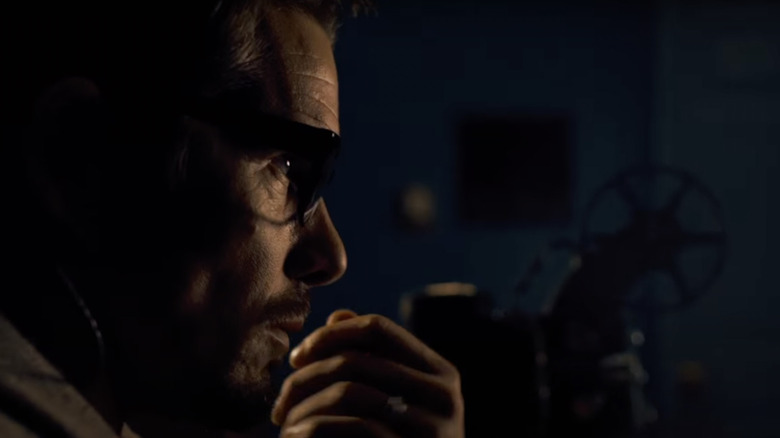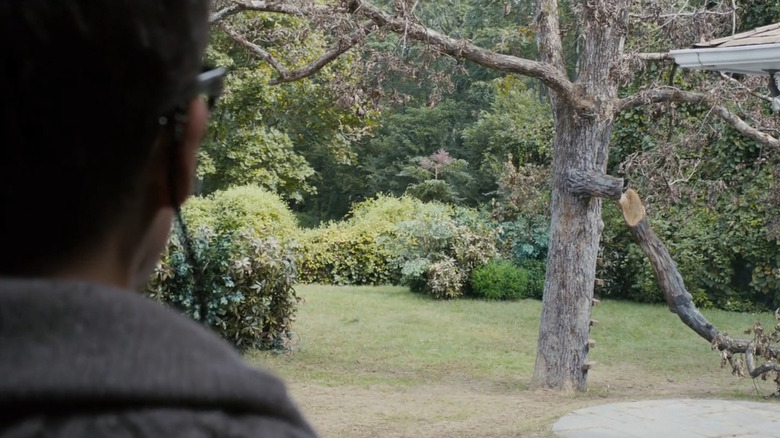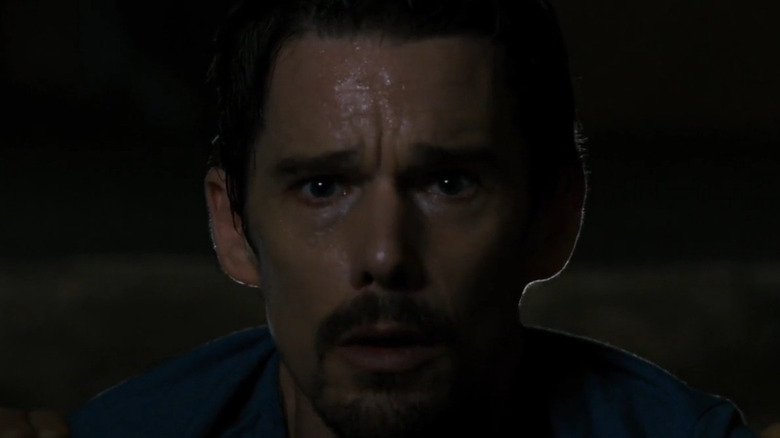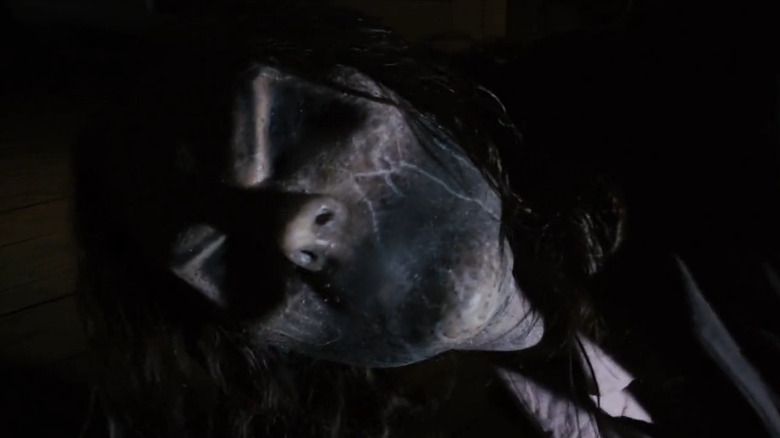Sinister's Ending Left Audiences Wanting More
Before donning a demonic mask in Scott Derrickson's "The Black Phone," Ethan Hawke teamed up with the director for another horror film featuring a devilish face. In "Sinister," Hawke plays a has-been crime novelist who is desperate for a new bestseller. In a last-ditch effort to spark inspiration, he moves into the house of a recently murdered family and begins researching the facts of their demise. What could possibly go wrong?
A fame-hungry father exposing his unsuspecting family to a murder house lays a stable foundation for a scary movie, but the film also has Super 8 snuff films, homicidal children, and a Moloch-inspired demon. Now, that's a party!
Throughout the film, familiar horror tropes of demonic possession, and ritual murder, but the film carefully side steps persistent gore and cheap thrills of a typical scary movie ... until it doesn't. Unfortunately, the film's uniqueness is undercut by a cheap and generic jump scare.
The premise
One-time hit crime writer Ellison Oswald (Ethan Hawke) hasn't had a popular book in a decade, and his last publication postulated a theory that led to the release of a killer. It's safe to say, even before he moves into a haunted murder house, that things aren't going so well for him. This is a trend that only gets worse when he discovers a box of Super 8 films in his new attic.
The old films have innocent titles like "Hanging Out," "Barbecue," and "Pool Party," but the footage is far from harmless. Oswald puts together an old projector, which is nestled conveniently in the old box, and lines up the first film. Random footage of people playing in their yard abruptly cuts to the family, minus the youngest daughter, attached to a tree by their necks. Someone out of frame cuts a large branch from the tree and the family lifts into the air, their bodies swaying and fighting until they die with bags over their heads. Turns out, all the films from the attic document unsolved murders.
Instead of tossing the films back into the box, leaving them in the attic to rot, or turning them over to the police, Oswald decides to solve the murders, find the family's missing daughter, and squeeze out fifteen more minutes of fame. This plan crashes down around him when he sees the face of a monster and occult symbols lurking in the videos. As it turns out, a pagan deity named Bughuul is behind the murders, and he has a taste for the souls of children.
Oswald becomes increasingly obsessed with the murders and the potential existence of a supernatural creature who may be responsible for them. The obsession doesn't stop until he comes face to face with the demon.
Face to face
The deeper Oswald digs into the murder mysteries, the more it interferes with his real life and his mental state. He becomes fixated on images of murder and Bughuul, downing copious amounts of alcohol to deal with it all. His deteriorating mental health and unhealthy obsessions make viewers question the validity of his opinions, conclusions, and, most importantly, his visions. Could a demon with a palate for children's souls really be responsible for murder, or has Oswald's drive for fame and attention finally pushed him over the edge? That question is brilliantly answered by a jump scare.
One night, after hearing strange noises, Oswald ventures up the attic stairs, sticks his head in, and sees ghost children watching footage of Bughuul. As the writer stares at the kids, the real demon's face fills the frame, providing viewers with a respectable jump scare, and knocking some much-needed common sense into Oswald. Now, there is no question that the monster from the films is real and he's got his eyes on the Oswalds. With this knowledge, Oswald burns the snuff films, flees the house, and tries to run away from the demon and his minions ... but it's much too late.
In the grand finale, Oswald discovers the missing children are responsible for the deaths of their families and that their souls belong to Bughuul. Unfortunately, he doesn't find out his daughter is Bughuul's newest acquisition until he meets the sharp end of her ax and becomes the star of the latest Super 8.
The jump scare featuring Bughuul's face reassures the audience that Bughuul and his soulless children are real, renews our faith in Oswald's psychological state, and leads to the family's quick exit from the murder house. Not only is it scary, but it is also a huge plot point that results in Oswald's death.
That other jump scare
In "Sinister," unsolved murders, demon lore, homicidal kids, and a protagonist that loves to stick his head in obviously treacherous openings all combine to create a gold-standard horror film. The movie carefully walks the tightrope between familiar and unique, embracing tropes without toppling into cliches ... for most of the runtime, anyway. Unfortunately, that tightrope walk ends in a spectacular fall from grace when the last shot is a cheap and wholly unnecessary jump scare.
After the murder of Oswald and his family, his possessed daughter smears blood all over the walls of the house before being whisked away by Bughuul. The next frame is filled with a box of Super 8 films sitting in an attic, just like the ones Oswald burned. This time, a new film canister sits on top of the others called, "House Painting '12."
It's a perfect ending for the film. The presence of the Super 8 films shows that Oswald's impromptu bonfire was useless, that Bughuul was responsible for the Oswalds' deaths, and that Bughuul is patiently waiting for his next victim to watch the films. Ideally, the film should end here with a soft fade to black, but it doesn't. Instead, the "Sinister" leans into an old film cliche, where the villain pops up to give viewers one last scare. For absolutely no reason whatsoever, before the film cuts to black, the demon's face fills the frame.
Unlike the earlier jump scare that changed Bughuul from an ancient myth to an attic-dwelling reality, this serves no purpose other than to give audiences one last thrill, and it's a devastatingly cheap and unnecessary one. It's an odd and potentially catastrophic choice for a film that spends almost two hours avoiding the pitfalls of horror cliches.



